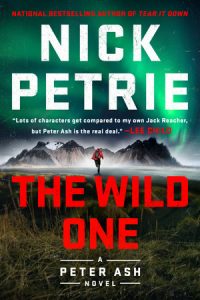As both reader and writer, I’m a sucker for setting.
Especially in crime fiction, so rich in hidden motives and dirty secrets, with violence simmering just below the surface. A strong setting evokes all those buried emotions waiting to explode into the open, an expressive avatar for everything the characters can’t say or do. Think Cormac McCarthy’s border country, Elmore Leonard’s Detroit, Daniel Woodrell’s Ozarks.
In the right hands, place becomes another character.
That’s why, in my own crime series, I set each book in a new location. I begin with a fuzzy idea, but the right setting sharpens it, helps select the characters and direct the story. Although I spend more time on internet research than I’d care to admit, I’ve discovered that you can only truly learn about a place when you leave the laptop behind and dive into the world.
I wrote a book about the newly-legal cannabis industry set in Colorado. Without a trip to Denver, I wouldn’t have seen the mountains rising at the western ends of longitudinal streets, or considered how they define the city and give it a frontier, boomtown flavor. I wouldn’t have passed cannabis shops in mini-malls, or walked through the cloud of pot smoke that saturates downtown Boulder like stoner potpourri, or seen a next-generation cannabis grow that looks like a biotech startup. These rich details turned the novel into a kind of modern western.
I wrote a book about race and class set in Memphis. As I roamed through Frayser and North Memphis, I saw houses sagging in on themselves, dragged down by rot and the consuming weight of kudzu. I saw holes in the streetscape where homes had once stood, their slab foundations scraped bare like horizontal tombstones. On those same blocks, I saw people at work in their gardens and waving at neighbors under towering flowering trees, whose fallen blossoms I smelled rotting in the gutter. I went to Beale Street clubs, whose talented musicians made me grab my wife and shake my hips. I talked to these same musicians and learned that many of them only got paid in tips. They worked daytime jobs like construction to pay the bills. You can’t have those conversations on the internet.
Visiting Iceland to research my latest book, The Wild One, I kept my eyes peeled for telling details. Because of Iceland’s rich crime fiction tradition, shared throughout Scandanavia, I felt more pressure than usual to get things right.
I started scribbling notes barely an hour after landing at Keflavík airport, when I rented a four-wheel-drive truck from a man who told me to park facing into the wind. Sometimes, he explained, the weather blows hard enough to bend car doors backward. Then he warned me that windblown gravel can take paint off sheet metal like a sandblaster, and gravel damage isn’t covered by basic insurance.
You won’t find stuff like that in a search engine.
* * *
Over the next eleven days, I saw stern Icelandic faces break into the most beautiful smiles. I walked through ancient cemeteries with heaved headstones and gnarly, wind-twisted trees. I visited a bookstore that sells books by the kilogram. I saw new mothers leave their babies unattended in strollers outside shops and restaurants, because the cool air is considered healthy. (In Iceland, apparently, nobody worries that their children will be stolen. This was in sharp contrast to my own suburban neighborhood, where I was once scolded by shocked parents for allowing my third-grade son to walk eight blocks home by himself after kickball. The same independent kid, ironically, who talked me into Iceland eight years later, because he wanted an adventure.)
My Icelandic experience was so vivid that, when the time came to write the book, I found many details difficult to leave out.
Like the long, sandy beach that looked like it belonged in a California tourism commercial, except for the fist-sized birds that dive-bombed my head as I walked, knocking off my hat and drawing blood with their beaks, my son laughing his ass off as I hit the deck.
Or the fishing floats washed up along every coast, aluminum rounds the size of beach balls, plastic ovals in a half-dozen sizes and colors that pop out of the landscape like strange alien eggs.
Or the waterfalls that appear at every turn of the road and trail, some high and feathery, others wide and thundering, most of them unmarked on map or sign. They flow from melting snow and glaciers, their water so clean and clear that I drank right out of the stream, and so cold that my teeth and throat ached afterwards.
Or, after five hard days in the backcountry, the fish restaurant in Ísafjörður where customers sat family-style at long tables under low ceilings in a building that was transported from Norway, every beam and plank, more than two hundred years before. (I never found out why.) In contrast, the cooking drew from world cuisine—hoisin to avgolemono to tomatillo—anything you might like, as long as you liked fish.
Most of all, the vivid Icelandic summer where grass comes in a thousand shades of green, daylight lasts 24 hours, and time becomes elastic and strange. Hiking through the long twilight feels both utterly normal and profoundly surreal.
The best expression of this came from a cab driver, who told me that, in summer, you never know what hour it is, and you don’t care, because you never want to sleep. At midnight, you have a few drinks and say, let’s go fishing. She paused. Of course, in winter, you just try not to kill yourself.
It required epic self-discipline not to put that line in the book. It didn’t quite fit.
I’ll use it in another novel, I hope. For the frugal writer, no research is wasted.
Especially when you turn off the internet and dive into the spectacular weirdness of the real world.


















